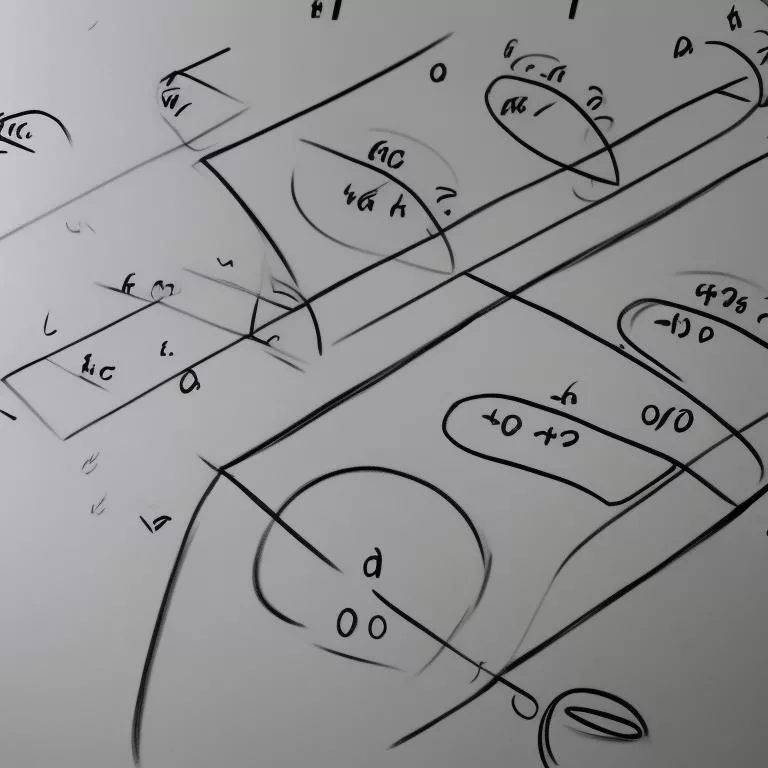When analyzing algorithms, it’s essential to understand how their performance scales with input size. This is where Big O notation comes into play—a mathematical notation that describes the upper bound on the growth rate of an algorithm’s time or space complexity. In this guide, we’ll explore the basics of Big O notation and provide examples for different complexity representations.
What is Big O Notation?
Big O notation is a way to express the efficiency of an algorithm in terms of its input size. It provides a high-level perspective on how the runtime or space requirements of an algorithm grow as the input size increases. The notation is written as O(f(n)), where “f(n)” represents the worst-case growth rate of the algorithm.
Common Big O Complexities:
- O(1) – Constant Time Complexity:
- Represents algorithms whose performance does not depend on the input size.
- Example: Accessing an element in an array using its index.
function constantTimeAccess(arr, index) {
return arr[index];
}- O(log n) – Logarithmic Time Complexity:
- Common in algorithms that divide the problem in each step.
- Example: Binary search algorithm.
function binarySearch(arr, target) {
let left = 0;
let right = arr.length - 1;
while (left <= right) {
let mid = Math.floor((left + right) / 2);
if (arr[mid] === target) {
return mid; // Found the target element
} else if (arr[mid] < target) {
left = mid + 1; // Search the right half
} else {
right = mid - 1; // Search the left half
}
}
return -1; // Target element not found
}
// Example usage:
const sortedArray = [1, 2, 3, 4, 5, 6, 7, 8, 9, 10];
const targetElement = 7;
const result = binarySearch(sortedArray, targetElement);
if (result !== -1) {
console.log(`Element ${targetElement} found at index ${result}.`);
} else {
console.log(`Element ${targetElement} not found in the array.`);
- O(n) – Linear Time Complexity:
- Performance grows linearly with the size of the input.
- Example: Iterating through elements in an array.
function linearSearch(arr, target) {
for (let i = 0; i < arr.length; i++) {
if (arr[i] === target) {
return i; // Found the target element
}
}
return -1; // Target element not found
}
// Example usage:
const arrayToSearch = [3, 7, 1, 9, 4, 2, 6];
const targetElement = 4;
const result = linearSearch(arrayToSearch, targetElement);
if (result !== -1) {
console.log(`Element ${targetElement} found at index ${result}.`);
} else {
console.log(`Element ${targetElement} not found in the array.`);
}
- O(n log n) – Linearithmic Time Complexity:
- Common in efficient sorting algorithms like merge sort.
- Example: Merge sort algorithm.
function mergeSort(arr) {
if (arr.length <= 1) {
return arr;
}
const middle = Math.floor(arr.length / 2);
const left = arr.slice(0, middle);
const right = arr.slice(middle);
return merge(mergeSort(left), mergeSort(right));
}
function merge(left, right) {
let result = [];
let leftIndex = 0;
let rightIndex = 0;
while (leftIndex < left.length && rightIndex < right.length) {
if (left[leftIndex] < right[rightIndex]) {
result.push(left[leftIndex]);
leftIndex++;
} else {
result.push(right[rightIndex]);
rightIndex++;
}
}
return result.concat(left.slice(leftIndex)).concat(right.slice(rightIndex));
}
// Example usage:
const arrayToSort = [4, 2, 7, 1, 9, 3, 6];
const sortedArray = mergeSort(arrayToSort);
console.log('Sorted Array:', sortedArray);
- O(n^2) – Quadratic Time Complexity:
- Performance grows quadratically with the size of the input.
- Example: Nested loops iterating through elements in an array.
function quadraticTimeIteration(arr) {
for (let i = 0; i < arr.length; i++) {
for (let j = 0; j < arr.length; j++) {
// Code inside the nested loop
}
}
}- O(2^n) – Exponential Time Complexity:
- Performance grows exponentially with the size of the input.
- Example: Recursive computation of Fibonacci numbers.
function fibonacci(n) {
if (n <= 1) {
return n;
}
return fibonacci(n - 1) + fibonacci(n - 2);
}
// Example usage:
const fibonacciIndex = 6;
const result = fibonacci(fibonacciIndex);
console.log(`Fibonacci number at index ${fibonacciIndex}: ${result}`);Why Does Big O Matter?
Understanding Big O notation is crucial for choosing the right algorithm for a given problem. In real-world scenarios, where datasets can be large and resources are limited, the difference in algorithmic efficiency can have a significant impact.
- Efficiency in Time: Algorithms with lower time complexity are generally more efficient. For large datasets, even a small change in time complexity can lead to substantial differences in processing time.
- Efficiency in Space: Similarly, understanding space complexity is vital for optimizing memory usage. Algorithms with lower space complexity are preferred when memory resources are constrained.
By analyzing the Big O complexity of algorithms, developers can make informed decisions about trade-offs and choose the most suitable algorithm for a given problem.
In conclusion, Big O notation provides a powerful tool for algorithm analysis, allowing developers to evaluate the efficiency of algorithms and make informed choices that can significantly impact the performance of their applications.

Leave a Reply